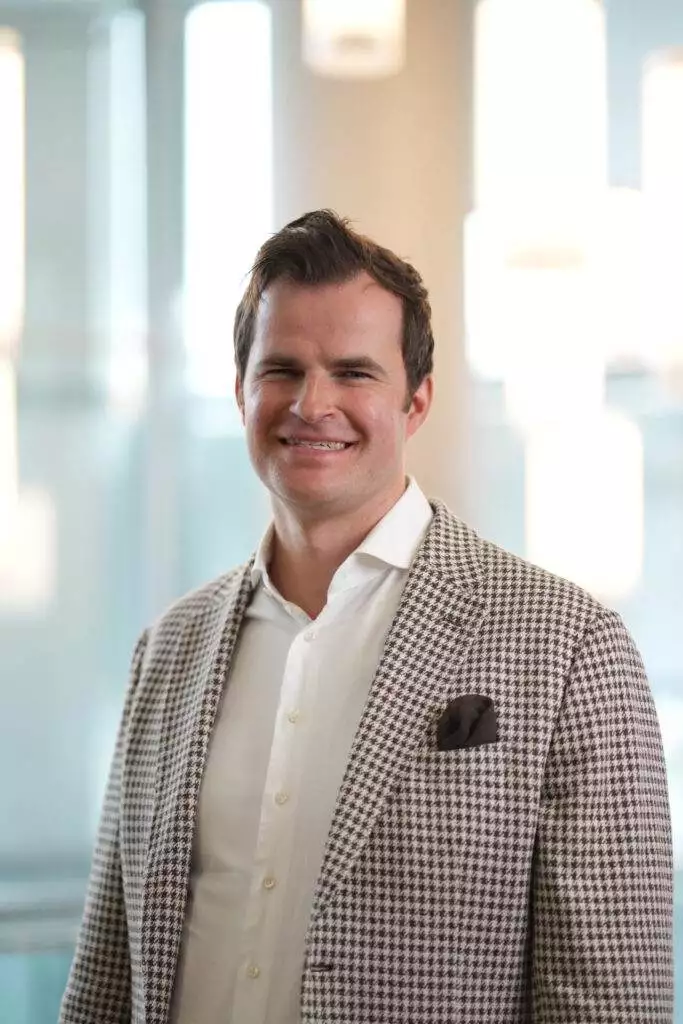Companies reinvent themselves from two starting points. The first situation requires a high degree of humility on the part of the company management and the costs of the changeover are relatively low. The other situation is characterized by a desire to maintain the status quo, which is accompanied by a certain arrogance. The costs of the changeover are extremely high here.
Scenario 1: Boldly trying something new
Visionary business leaders are constantly reinventing their companies, especially when they are market leaders. They are not satisfied with the market position they have achieved and do everything they can to constantly increase their lead over the competition by continuously developing their level of digitalization and innovation! From this position of strength, they have the courage to experiment, as they have also established continuous innovation as a core competence and are extremely interested in the further development of their products.
You may have thought during the last presentation by a Google speaker that Google has the money to experiment in as many new fields as the company is currently doing. However, you must bear in mind that the necessary capital was not earned overnight, but is the result of years of consistent “questioning”!
Scenario 2: Forced to change
Companies belonging to the second scenario see their success or significant market share as a constant, so they believe themselves to be in an impregnable fortress and have sometimes created a bureaucracy that makes any agility or quick and hard adaptation of the course to be followed impossible. Companies such as General Electric in the early 2000s and Opel AG are examples of this type of behavior. Often these companies have created in-house incubators to make up for the company's slowness and innovation fatigue. Unfortunately, however, these “labs” are all doomed to failure: A speedboat sailing ahead cannot make a giant tanker change course.
Only a severe economic crisis prompts these companies to make drastic and often painful changes, as it is suddenly a matter of bare survival. The coronavirus pandemic is now making this mercilessly clear to companies in the second scenario. A sad example is TUI, Europe's largest travel group, which has applied for 10 percent of its turnover, i.e. 1,800 million euros, as state aid, which corresponds to almost five times its last annual profit!
What will the world look like after coronavirus?
Every day, we are confronted with reports in the media about how dramatically the world has changed due to the coronavirus and what it will look like once the current crisis has been overcome. However, as it is not yet possible to predict when the crisis will really be over and we will be able to return to our carefree life with its many social contacts, I think it is time to consider the following questions: To what extent is your current business model still valid in a post-crisis economic world? What lessons do companies need to learn from changing consumer behavior and consider in relation to their business model?
Business model and degree of digitalization
An alarming number of sectors are still largely dependent on stationary sales of their services. Even in sectors with a high degree of digitalization (e.g. electronic retail), e-commerce rarely accounts for more than 10 or 15 percent. In some sectors (such as logistics services and the distribution of medical products), this share is even limited to a low single-digit percentage range. Conversely, this means that organizations have to maintain a large and very expensive sales apparatus. In my experience, 85 percent of all organizations fall far short of their potential return on sales and even generate a negative return on sales in around 40 percent of cases. This is also due to the Pareto principle to which all sales organizations are subject.
Companies can address their customers in a multidimensional way, especially during the ongoing crisis! It's like repainting the peeling paint on your wall (a new marketing campaign or a product update, etc.) instead of focusing on it, why the paint is peeling. Let's assume that the wall is damp from the inside because the insulation, which has been reliable for many years, has suddenly become brittle (your business model!).
If you know that the wall is damp, you will naturally want to tackle the root of the problem. That's why you can't avoid overhauling your business model - and there's no better time to do it than now! What has led to your success in recent years or decades will not lead to comparable success in the decades to come! You may still achieve respectable results, but you will fall far short of your potential - and worse still, you will not build up any resilience to future global upheavals such as the coronavirus crisis.
Realize this: Reducing your dependence on brick-and-mortar retail reduces the need for personal visits and increases your resilience in the event that direct social contact becomes impossible again for a longer period of time due to a similar crisis! To do this, you need to become aware of all your customer touch points and take them into account when adapting your business model!
Ihrer Customer Touch Points bewusst werden und diese bei der Anpassung Ihres Geschäftsmodells berücksichtigen!
Changed consumption or change in customer behavior
The second important factor that companies now have to deal with is the change in consumer behavior caused by the coronavirus crisis, which is crucial for the future. Let's take the German Football League as an example: until recently, many clubs generated revenues in the high three-digit million range. In addition to sponsorship, they and the league generated reach and revenue with full soccer stadiums. However, instead of going to the stadium with a friend on a Saturday afternoon as they used to, many previously loyal stadium visitors (mostly fathers) may stay at home in future, as they have grown fond of spending time with their families and now consider it more important than supporting their club. It is also quite possible that many people will generally avoid being around other unknown people at major events for years to come!
Soccer clubs should therefore not assume that everything will return to the way it was before once the current restrictions are lifted. Rather, they should consider, for example, how they can compensate for the drop in income due to the lack of spectators: Is it possibly necessary to increase the number of matches, or do they need to rethink in terms of sponsoring or marketing the matches? And what new sources of income could they tap into by adapting their business model?
Conclusion
Particularly in an extremely tactical “crisis period” such as the current one, companies need to address the strategic question of how they can make their business model more digital and less stationary, and also analyze how changing consumer behavior will affect existing sales sectors in the future. Now is the time to set the course to not only emerge from crisis mode as quickly as possible, but also to become more resilient and therefore more sustainable.
Discuss these and other topics with us! We have decided to organize a 45-minute webinar every Wednesday at 5 pm. Through the constructive exchange at entrepreneurial eye level, you can benefit from the best practices in crisis management of other companies in these extremely difficult times and take away valuable impulses for new business models.
If you would like to take part in our webinar, please get in touch with us or register here.

